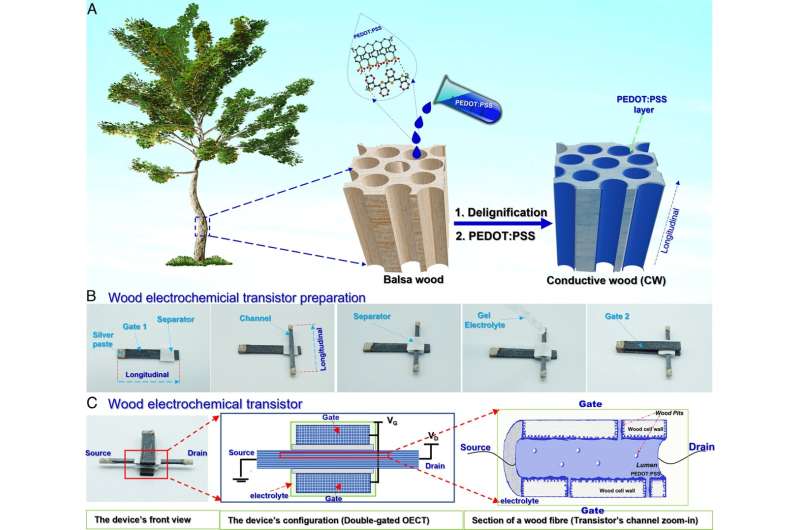A team of organic chemists and engineers from Linköping University and KTH Royal Institute of Technology, both in Sweden, has demonstrated that working transistors can be made from treated wood. The results have been published in Proceedings of the National Academy of Sciences.
Transistors are devices that switch or amplify electrical signals in a larger device. Scientists have, over the years, learned to make them ever smaller—currently, billons of them can fit on a single computer chip. Most transistors are limited to use in certain materials—those on a chip, for example, exist on a base of the semiconducting material, silicon. In this new effort, the team in Sweden looked into the possibility of creating transistors that could be used in bioelectronic products, or even purely plant-based devices. To test the possibility, they created a transistor out of wood and a few other materials.

The team tested a variety of tree types and found that balsa seemed to suit their needs best due to its strength, permeability and low density. They started by bathing small strips of the wood in a chemical bath to remove some of its lignin, making it more porous. Then they forced a conductive type of plastic called PEDOT:PSS into the small vessels of the wood normally used for water transport, which coated the vessel walls.
In all, just three slats of the treated wood were needed—two wide ones that were laid atop one another to serve as control electrodes. The third was placed in between the two wider slabs in perpendicular fashion—it served as a channel between the power source and the current drain. The team also filled the cavities in the channel with an electrolyte gel to allow for movement of ions and electrons. Also, the strips were separated by a thin cloth made of cellulose. The result was a cross-shaped transistor.
The team tested their device by applying 2.5 volts of current and found that the flow could be interrupted as hoped. The team acknowledges that their device is slow compared to those currently in use—it takes approximately one second to switch off the current and five seconds to switch it back on—but they suggest it shows that construction of bio-transistors is possible
Source: Techxplore










